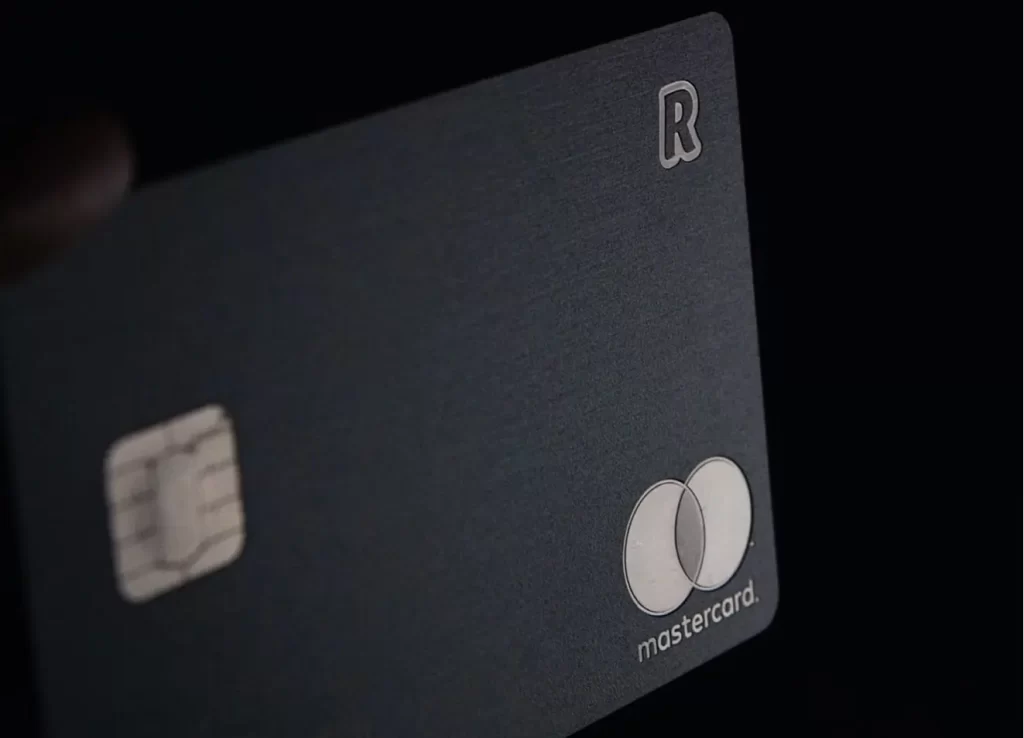
Contents
- 1 Key E-commerce Website Design Trends within the UAE
- 2 Personalization and Customization in Website Design
- 3 High-Quality Visual Content
- 4 Fast Loading Speeds
- 5 Enhanced Security Features in Web Design
- 6 Sustainable and Ethical Website Design
- 7 Mobile-First Design for Ecommerce in the UAE
- 8 Future Trends and Innovations in UAE Ecommerce Website Design
- 9 Emerging Technologies in Ecommerce Website Design
- 10 User-Centered Design (UCD) in Ecommerce Websites
- 11 Cultural Relevance in UAE Ecommerce Design
- 12 Conclusion
Key E-commerce Website Design Trends within the UAE
Mobile-First Design
Best Practices for Mobile-First Ecommerce Sites
Minimalist and Clean Aesthetics
Personalization and Customization in Website Design
Leveraging Data for Personalized Experiences
Tools and Technologies for Customization
High-Quality Visual Content
The Role of Visuals in Ecommerce Engagement
Techniques for Incorporating High-Quality Images and Videos
Fast Loading Speeds
Impact of Loading Times on User Retention
Strategies for Optimizing Website Performance
Enhanced Security Features in Web Design
Importance of Security in Online Transactions
Key Security Measures for Ecommerce Website Design
Sustainable and Ethical Website Design
Rising Consumer Demand for Sustainability
Implementing Eco-Friendly Design Practices
Mobile-First Design for Ecommerce in the UAE
The Importance of Responsive Mobile Design in User Engagement and Conversion
For businesses in the UAE, understanding the importance of responsive mobile design is crucial to meeting the expectations of today’s shoppers. A responsive design ensures that a website adapts seamlessly to any screen size, which is vital in a mobile-first environment. The UAE’s mobile market demands that websites be fast, easy to navigate, and visually appealing on all devices, especially smartphones.
A responsive website leads to better user engagement. The smoother the experience, the more likely users are to stay longer on your site and complete their purchases. When a website is not optimized for mobile, users tend to bounce off, looking for a more mobile-friendly alternative. This directly impacts conversion rates. By investing in responsive web design, ecommerce businesses can maintain their customer base, build trust, and increase their chances of repeat purchases.
For example, GO-Globe understands the importance of mobile optimization for ecommerce sites. As a digital solutions provider, GO-Globe ensures that its ecommerce websites are not just functional but also enjoyable to use on any mobile device. This level of user-centric design is key to driving conversions in a market where mobile usage is at an all-time high.
Mobile Shopping Habits in the UAE and Their Impact on Ecommerce Website Design Trends
The mobile-first culture has deeply impacted ecommerce website design trends in the UAE. With a growing reliance on smartphones, designers are now prioritizing mobile-friendly features. More and more ecommerce businesses are adopting the mobile-first approach, which involves designing websites first for mobile devices before scaling them for larger screens. This approach ensures that every detail—from navigation to checkout—is optimized for mobile users.
Responsive web design is also closely linked to mobile shopping habits. For example, easy navigation, quick loading times, large and clear images, and secure checkout processes have become fundamental in catering to mobile users. In the UAE, where time is of the essence, any delay or friction during the shopping journey can result in abandoned carts. For ecommerce businesses to succeed, particularly in a competitive market like the UAE, it’s crucial to stay on top of these mobile design trends.
GO-Globe works closely with ecommerce businesses to ensure they are not only keeping up with these trends but also staying ahead. Whether it’s improving the user experience (UX) or ensuring faster load times, responsive mobile design has proven to be an essential factor in driving sales and engagement for ecommerce sites in the UAE.
Future Trends and Innovations in UAE Ecommerce Website Design
The ecommerce industry in the UAE is evolving at a rapid pace. With a tech-savvy population, growing mobile usage, and a booming digital economy, businesses are keen to meet the needs of the modern consumer. As the market continues to mature, ecommerce website design in the UAE is set for several significant shifts. From personalized shopping experiences to AI-driven innovations, these changes will shape the future of online retail in the region.
One of the most important trends in UAE ecommerce website design is the increasing demand for personalization. Consumers expect more tailored experiences when shopping online, and businesses are responding by offering custom features like personalized product recommendations, dynamic content based on browsing history, and advanced filtering options. This level of personalization helps build stronger connections with customers, encouraging repeat purchases and brand loyalty.
Mobile-first design is also a key focus in the UAE. With mobile devices becoming the primary platform for online shopping, ecommerce websites are adapting to ensure they are fully optimized for smaller screens. Faster load times, intuitive navigation, and mobile-friendly checkout processes are now a must. Responsive design is no longer a luxury but a necessity for businesses that want to stay competitive.
Another emerging trend is the use of augmented reality (AR) and virtual reality (VR) technologies. In the UAE, where consumers are increasingly comfortable with new technologies, AR and VR offer immersive shopping experiences. For example, furniture retailers are using AR to allow customers to visualize how a product will look in their homes before making a purchase. This not only enhances the customer experience but also reduces the likelihood of returns, benefiting both consumers and retailers.
As ecommerce continues to grow, businesses in the UAE will also need to keep an eye on the role of artificial intelligence (AI). AI-powered chatbots, virtual assistants, and recommendation engines are becoming integral parts of ecommerce website design. These technologies help businesses automate customer service, offer real-time support, and predict customer preferences, ultimately improving the overall shopping experience.
The future of ecommerce in the UAE will also see a rise in voice search optimization. With the growing popularity of voice-activated devices like smart speakers, voice search is expected to become a key player in ecommerce. Websites that integrate voice search capabilities will provide consumers with an easier and more convenient way to find products, making it a vital trend for the years to come.
As for ecommerce website design trends, one thing is clear: the focus will be on creating a more interactive, engaging, and user-friendly experience. This involves not just appealing visuals but also functional elements that simplify the online shopping process, helping businesses stay ahead in a competitive digital marketplace.
Key Innovations and Emerging Technologies Shaping E-Commerce in the UAE
The ecommerce industry in the UAE is witnessing significant advancements driven by emerging technologies. As businesses look to stand out in an increasingly crowded market, adopting these innovations will be crucial for success. Let's explore some of the key technologies that are transforming the way ecommerce websites are designed and operated.
Artificial Intelligence (AI) in Ecommerce
AI is already having a profound impact on ecommerce in the UAE. From predictive analytics to personalized recommendations, AI is helping businesses understand their customers better and deliver a more customized shopping experience. Ecommerce websites are using AI-powered chatbots to assist customers in real-time, providing immediate answers to queries and guiding them through the purchasing process. Additionally, AI is being used to optimize inventory management and pricing strategies, ensuring that businesses can keep up with demand while maximizing profitability.
Voice Commerce
Voice search and voice-assisted shopping are rapidly gaining traction in the UAE, thanks to the increasing popularity of voice-activated devices like Amazon Alexa and Google Assistant. Consumers in the region are becoming more comfortable using voice commands to search for products, make purchases, and get recommendations. Ecommerce websites that incorporate voice search capabilities are set to benefit from this growing trend, offering shoppers a hands-free, intuitive experience that saves time and effort.
Augmented Reality (AR) and Virtual Reality (VR)
AR and VR are providing new opportunities for ecommerce businesses to engage their customers. In the UAE, where the adoption of these technologies is high, businesses are incorporating AR and VR into their websites to enhance the shopping experience. For example, beauty brands are using AR to allow customers to "try on" makeup virtually, while fashion retailers are offering virtual fitting rooms. These technologies give consumers a better sense of how products will look in real life, increasing their confidence in making purchases.
Blockchain and Secure Payments
Blockchain technology is becoming an essential tool for enhancing security and transparency in ecommerce transactions. In the UAE, where data privacy and security are top concerns, blockchain can offer a secure way to handle payments, ensuring that sensitive information is protected. Additionally, the rise of cryptocurrencies is pushing ecommerce businesses to consider new payment methods. By integrating blockchain and cryptocurrency payments, ecommerce websites can appeal to a broader range of customers and ensure secure transactions.
Advanced Analytics and Big Data
The use of big data and advanced analytics is allowing ecommerce businesses in the UAE to gain valuable insights into customer behavior, market trends, and inventory management. By analyzing vast amounts of data, businesses can identify patterns, predict future trends, and create targeted marketing strategies. Ecommerce websites that use these insights to deliver more personalized experiences will be better positioned to attract and retain customers.
As the ecommerce industry in the UAE continues to grow, these emerging technologies will play a pivotal role in shaping the future of website design. Companies like GO-Globe are already embracing these innovations to help businesses stay competitive in the evolving digital marketplace. By staying ahead of the curve and integrating the latest technologies, businesses can offer their customers more convenient, engaging, and secure online shopping experiences.
Emerging Technologies in Ecommerce Website Design
The ecommerce landscape is rapidly changing. As more businesses in the UAE turn to online platforms, they must stay ahead of the curve to meet rising customer expectations. With technologies like Augmented Reality (AR), Virtual Reality (VR), Voice Search Optimization, and AI Chatbots making their mark, ecommerce website design is evolving to create a more immersive and intuitive shopping experience.
These technologies are helping businesses in the UAE enhance user engagement, drive conversions, and build stronger customer relationships. But how exactly are they doing this? Let’s break it down.
Augmented Reality (AR) and Virtual Reality (VR) in Ecommerce
AR and VR are becoming more common in online shopping experiences, especially in the fashion, furniture, and beauty industries. These technologies allow customers to virtually try on clothes, test makeup products, or visualize furniture in their homes. AR superimposes digital elements onto the real world, while VR offers a completely immersive environment.
For example, a customer can see how a sofa looks in their living room through their phone or use VR to explore an entire virtual store. In the UAE, where consumers are accustomed to high-end shopping experiences, this integration of AR and VR is a game-changer. It helps boost customer confidence, reduce purchase hesitations, and increase sales by making the shopping experience more interactive.
Voice Search Optimization
With the increasing popularity of voice assistants like Amazon’s Alexa and Google Assistant, voice search optimization is becoming crucial for ecommerce websites. Customers are no longer just typing queries into search bars; they are using their voice to find products, compare prices, and make purchases. This shift in behavior means businesses need to rethink how they design their websites and optimize them for voice search.
In the UAE, where smart home devices are gaining traction, optimizing ecommerce websites for voice search ensures a smoother experience for customers. By incorporating conversational keywords and focusing on natural language processing (NLP), businesses can rank higher in voice search results and make it easier for consumers to discover products on their platforms.
AI Chatbots for Customer Engagement
AI-powered chatbots are increasingly common in ecommerce websites, offering 24/7 customer support and personalized recommendations. These chatbots use machine learning to understand customer queries and offer tailored suggestions based on browsing history or previous purchases.
For businesses in the UAE, AI chatbots are a great way to improve customer engagement without the need for constant human intervention. Customers can get answers to their questions, find products faster, and even receive personalized promotions—all while reducing the workload on customer service teams. The result? Happier customers and a more efficient business model.
Why These Technologies Matter for Ecommerce Website Design
The integration of these technologies into ecommerce websites isn’t just a trend—it’s a necessity for businesses wanting to stay competitive in today’s market. In the UAE, where ecommerce is booming, adopting these technologies helps create a more interactive, convenient, and personalized shopping experience for customers.
As companies like GO-Globe focus on ecommerce website design trends, they understand that staying ahead in technology means staying ahead in business. Embracing AR, VR, voice search optimization, and AI chatbots can help you attract more customers, improve engagement, and increase conversions.
By paying attention to these technologies, ecommerce businesses can ensure they’re offering a shopping experience that meets the needs of today’s tech-savvy consumers while positioning themselves for success in the future.
User-Centered Design (UCD) in Ecommerce Websites
Designing an ecommerce website is more than just choosing colors and fonts. It’s about understanding the people who will use the site and tailoring the experience to fit their needs and behaviors. When you focus on User-Centered Design (UCD), every decision made in the design process is based on real user insights. This approach creates a website that not only looks good but also works for the users, driving conversions and satisfaction.
Adopting UCD Principles in Ecommerce Design
The core idea behind UCD is simple: design around your users. Rather than making assumptions about what your customers want, UCD emphasizes continuous feedback and iteration based on their preferences. For ecommerce websites, this means understanding how users interact with the site, what their pain points are, and what features or content they truly value.
Key principles to follow when adopting UCD in ecommerce website design include:
-
User Research: The first step in UCD is understanding your audience. Conduct surveys, interviews, or usability studies to gather insights about what your customers are looking for. Focus groups and one-on-one user sessions can reveal important information that helps inform your design decisions.
-
Clear Navigation: Users should be able to find what they need with minimal effort. Organizing the site’s structure and navigation in a way that aligns with how your audience thinks helps reduce confusion and frustration.
-
Responsive Design: With mobile shopping becoming more common, designing a website that adjusts seamlessly to different screen sizes is crucial. A responsive site enhances the user experience, making it easier to browse and shop no matter the device.
-
Optimizing Checkout: Ecommerce websites are notorious for having high cart abandonment rates. A smooth, intuitive, and fast checkout process is vital for conversions. Reducing the number of steps and providing clear instructions can significantly enhance the experience.
-
Consistent Feedback: Users should feel confident in their actions. Whether it's confirming an item has been added to the cart or updating their payment information, timely feedback builds trust and ensures users know what to expect next.
The Role of User Testing and UX Research
User testing and UX research are essential elements of a successful ecommerce website. By gathering data from real users, you can pinpoint potential issues that may go unnoticed during the design phase. This research doesn’t just help identify problems; it also uncovers opportunities for improvement and optimization.
User Testing: By observing real users as they interact with the site, you can see firsthand where they get stuck, frustrated, or confused. These insights provide a clear direction for redesigning specific sections of the website to enhance usability.
A/B Testing: This is another valuable tool for improving design. A/B testing involves presenting users with two versions of the same webpage (e.g., different layouts, button styles, or color schemes) and tracking which performs better. This iterative process can guide you toward the most effective design choices.
UX Research: UX research goes beyond just observing users. It involves analyzing behaviors, preferences, and needs. Through methods such as surveys, analytics, and user interviews, you can gather valuable data about how users experience your website and what can be done to improve it.
Why UCD is Crucial for Ecommerce Success
A website’s design doesn’t just impact how it looks – it directly influences how users interact with it and, ultimately, how much they purchase. Ecommerce websites that embrace UCD principles are better equipped to meet the needs of their users, resulting in higher conversion rates, fewer abandoned carts, and an overall more enjoyable shopping experience.
Moreover, focusing on usability means that users spend less time navigating through complicated processes, leading to a higher level of satisfaction and a stronger likelihood that they’ll return. Ecommerce website design trends, such as personalization and intuitive navigation, are increasingly being shaped by UCD principles. By keeping users at the center of the design process, companies like GO-Globe can ensure their ecommerce sites not only meet but exceed the expectations of today’s savvy online shoppers.
Cultural Relevance in UAE Ecommerce Design
When designing an ecommerce website for the UAE market, understanding the local culture is crucial. The UAE is a country that blends modernity with tradition, and this duality must be reflected in web design. For example, color preferences in the UAE often lean towards bold, rich hues like gold, green, and red, symbolizing prosperity, growth, and success. Incorporating these colors into your website's design can help establish a visual connection with local users.
Cultural symbols also play a significant role. Imagery that reflects the country’s heritage—such as Arabic calligraphy, architectural elements, and iconic landmarks like the Burj Khalifa—can resonate with your audience. Integrating these elements into your ecommerce website shows respect for local values and traditions, helping you create a stronger bond with potential customers.
Additionally, understanding the UAE's Islamic culture is essential when choosing design elements. For instance, avoiding images of alcohol or culturally inappropriate content is important to ensure your website feels inclusive and respectful.
By incorporating local cultural elements, businesses can build credibility and foster a more genuine relationship with their audience, ultimately boosting user engagement and trust.
The Impact of Language Localization on Ecommerce Success
One of the most significant aspects of ecommerce website design in the UAE is language localization. With Arabic being the official language and English widely spoken, offering both Arabic and English language options on your website is essential. It not only meets the needs of a diverse population but also enhances user experience.
Arabic text is read from right to left, so it’s important to adapt the layout of your website to accommodate this. Ensuring that your website’s navigation and content are easily accessible in both languages is key to keeping users engaged. In addition, it’s important to note that Arabic-speaking customers prefer culturally relevant websites and avoid translation errors. Poor translations or irrelevant content can cause frustration and diminish trust in your brand.
When users feel comfortable in their native language, they are more likely to explore your products, trust your brand, and make a purchase. Moreover, by offering both Arabic and English, you create a feeling of inclusivity, making your website accessible to a larger audience. For businesses in the UAE, this attention to detail in language localization is not just a design preference, but a necessity for success in the ecommerce world.
GO-Globe understands the importance of these cultural and linguistic nuances and helps businesses design ecommerce websites that connect meaningfully with the UAE market.
Conclusion
FAQS
1. What is the current trend in UAE eCommerce website design?
The current trends are mobile-first design, minimalistic layouts, fast loading of pages, and integration of local cultural elements.
2. Why is mobile-first design for eCommerce important in the UAE?
Mobile-first design is important because most browsers and online shoppers in UAE love shopping with the help of their smartphones.
3. How does minimalistic design help to improve user experience?
It has less clutter, which makes it easier to navigate and allows the product to take the center stage.
4. How does including local cultural elements enhance the design of UAE eCommerce?
It builds trust while promoting relevance to the target audience, hence ensuring better engagement and sales.
5. How important is web speed for UAE eCommerce?
Website speed is important because if the website pages load too slowly, it increases your bounces and decreases sales opportunities.
7. Are personalized shopping experiences trending in UAE eCommerce?
Yes, personalized shopping experiences—like product recommendations or any customized content—keep getting more and more common.
8. What is the impact of UX/UI design on eCommerce success in UAE?
Good UX/UI design will ensure a seamless and delightful shopping experience, which helps increase conversion rates geographically.
9. How do UAE eCommerce companies translate social proof?
Increasing reviews, testimonials, and social media integrations can build up trust and nudge towards a sale
10. What is the payment gateway trend for UAE eCommerce companies?
More different payment options, including local means of payment and digital wallets, like, for example, Apple Pay.














